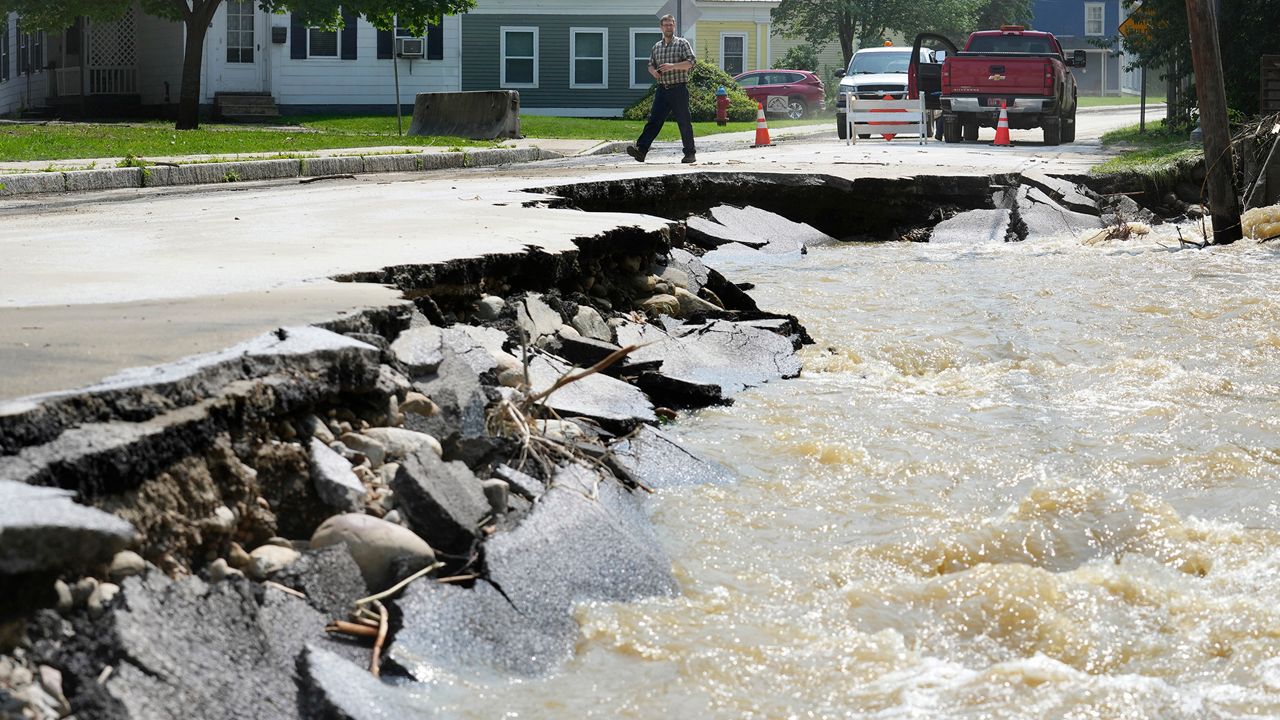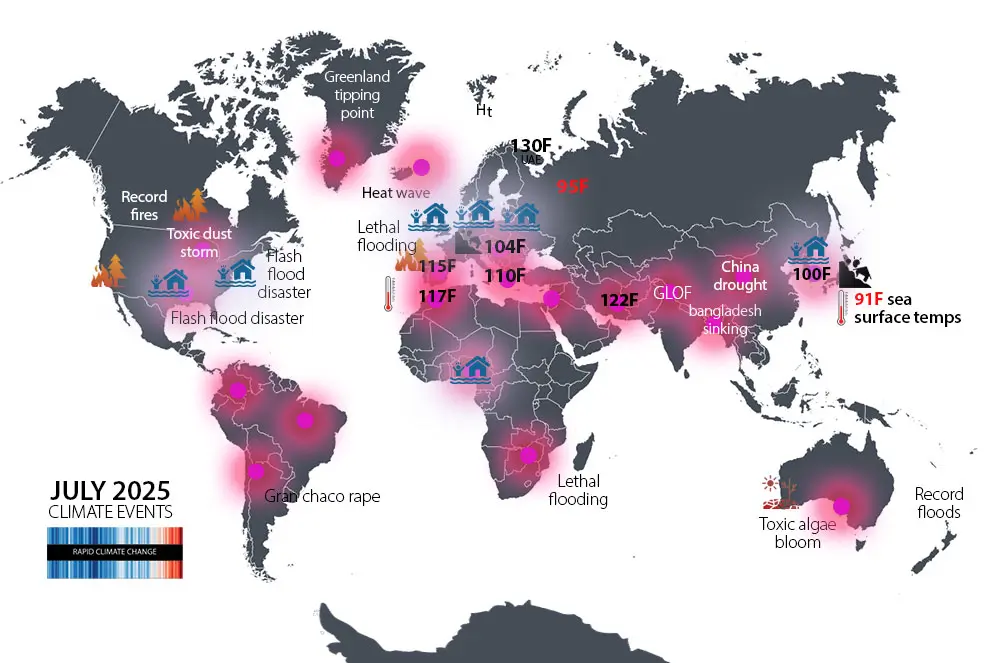
More heat, more water vapor drive extreme weather world wide
The essential conditions for this decade’s violent storms to form are moisture and atmospheric instability. Those are the conditions we are now experiencing on a planet wide basis, accounting for a crazy uptick in devastating storms.
First, in order for a storm to develop, the air needs to contain enough moisture. That moisture comes from water evaporating off oceans, lakes and land, and from trees and other plants.
The amount of moisture the air can hold depends on its temperature. The higher the temperature, the more moisture air can hold, and the greater potential for heavy downpours. This is because at higher temperatures water molecules have more kinetic energy and therefore are more likely to exist in the vapor phase. The maximum amount of moisture possible in the air increases at about 7% per degree Celsius.
Texas tragedy one for the record books
Texas Hill Country was beset by death and disaster Friday as at least 70 people were killed and about 20 girls attending a summer camp were reported missing after months worth of heavy rain fell in a matter of hours, leaving search teams to conduct boat and helicopter rescues in the fast-moving water.
Lt. Gov. Dan Patrick said somewhere between 6 and 10 bodies had been found so far in the frantic search for victims. Meanwhile, during a news conference conducted at the same time as Patrick’s update, Kerr County Sheriff Larry Leitha reported that there were 13 deaths from the flooding.
At least 10 inches (25 centimeters) of rain poured down overnight in central Kerr County, causing flash flooding of the Guadalupe River and leading to desperate pleas for information about the missing.
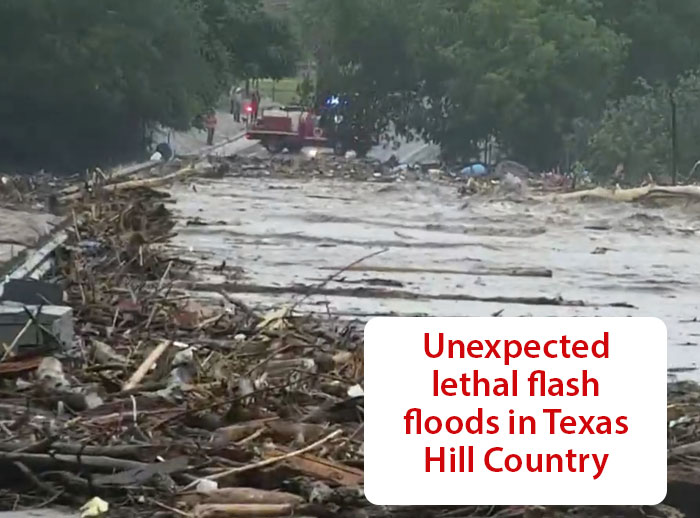
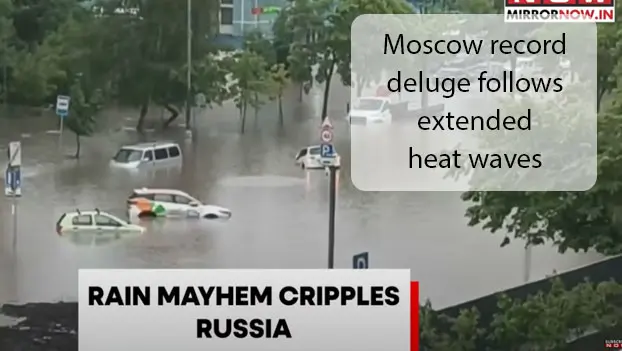 Moscow deluge
Moscow deluge
A record-breaking 3.6 inches of rain fell on Moscow, during the night of July 21, 2025, flooding roads, metro stations, and underpasses, and causing widespread transport disruptions.
The extreme storms follow an extended period of record heat, and will likewise be followed by more record heat, with temps expected in the mid-nineties F.
Emergency floods shock New York and New Jersey
New Jersey Gov. Murphy declared a state of emergency covering all counties after severe storms crashed through the area, killing at least two.
In northern New Jersey, between 3 and 6.5 inches of rain fell, with continued flood impacts expected on July 15, the National Weather Service in Mount Holly said.
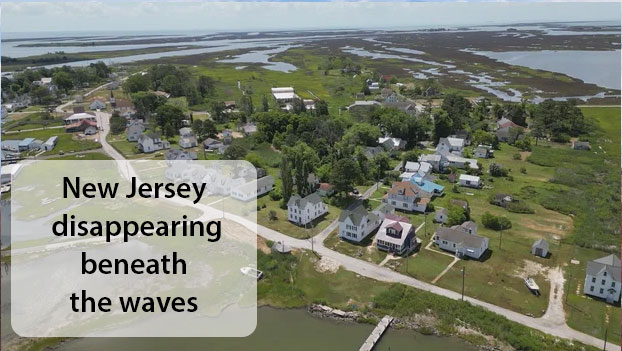
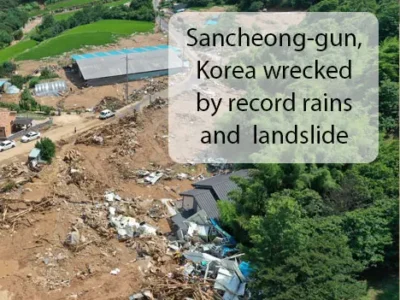
Record floods as South Korea hits 100 °F
A lethal pattern of extreme heat, high humidity and record downpours is continuing in South Korea and expected to last the summer.
In mid July, areas of South Gyeongsang Province saw accumulated rainfall over the five days at 32.5 inches. The aftermath of the storms have raised humidity levels to dangerous levels, producing heat indexes of over 100 °F. The record breaking rainfalls caused flood and landslides, killing dozens of people.
“With the seas surrounding Korea heating up, the atmosphere is increasingly saturated with moisture. The necessary conditions for intense weather events like this are being met every year.” – Prof Kim Kim Baek-min, Pukyong National University’s Division of Earth and Environmental System Sciences.
Heat driven rains overwhelm UK sewage systems
This is a single example of what kind of nasty weather events are coming for most places that smugly think they are immune from the effects of global warming: Hundreds of sewage spills were recorded across England this as torrential rain overwhelmed water companies’ infrastructure.
Popular tourist spots from Northumberland to Cornwall were polluted with raw waste, as water companies were forced to discharge sewage through ‘storm overflows’.
The causal chain is the usual: Rapid increase in atmospheric water vapor provides more energy for extreme storms combined with short sighted infrastructure decisions and privatization of public water systems.

Epic floods devastate Venezuelan towns
Tropical Wave 9 interacting with the Intertropical Convergence Zone (ITCZ) brought intense rainfall to Venezuela on June 24, resulting in severe floods, landslides, and river overflows across multiple states.
According to the Venezuelan Civil Protection and the International Federation of Red Cross and Red Crescent Societies (IFRC), over 4 700 people were affected, either displaced, evacuated, or in need of urgent assistance.
.
Romania smashed by flash floods, killing three
Flash floods triggered by torrential rains have displaced hundreds, left dozens stranded and killed a 66-year-old man in Romania. as July ends. Record torrential rainstorms triggering flash floods in the country’s northeast and killing at least three people, officials said.
Hundreds were forced to leave their homes as Romania’s rescue services deployed in the hard-hit counties of Neamt and Suceava. Helicopters and firefighters rescued residents, some of whom were trapped in their homes by floodwaters. Authorities said that 890 people were evacuated.
